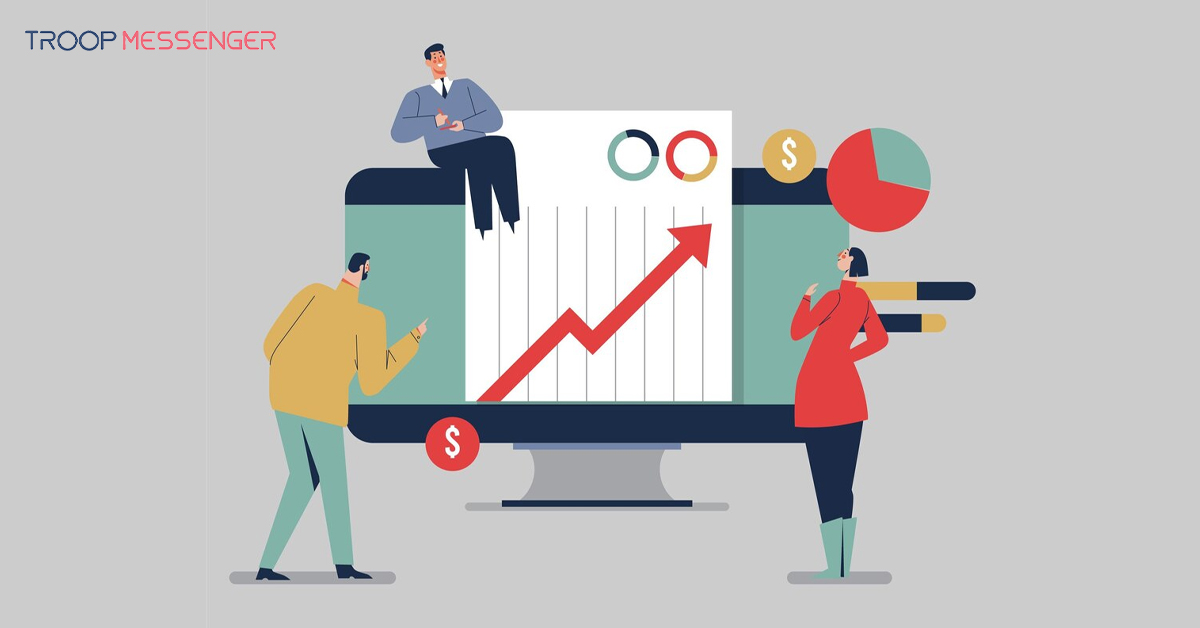Connect with us

Understanding Forex Trade Indicators: A Guide to Their Purpose and Application
A trader cannot afford to act blindly and make decisions about their investments solely based on intuition. Therefore, it is vital to understand where the market is heading and what trends prevail in it, and based on this information, open or close positions, buy or sell when it can be most advantageous. To make such forecasts, traders conduct preliminary technical and fundamental analyses of the market. This work is done with the help of indicators that provide clear, measurable data to rely on in everyday market activities. Conducting analysis is necessary both when trading manually and when using the best EA bot Forex, which automates most processes.
Therefore, the first thing to start with in getting acquainted with the Forex market is to study the indicators, how they work, how to correctly interpret the data obtained, and how to use it.
What Are Forex Trade Indicators?
Forex trend indicators are indicators derived from mathematical models and formulas that help better understand the market situation and clearly identify potentially profitable trading opportunities. Indicators can demonstrate market volatility, price impulses, price movements, and trends and identify overbought or oversold conditions of a particular asset. Due to this variability, indicators are divided into several types. A trader does not need to analyze indicators for all of them, as this complicates the workflow and overwhelms with excessive information. Therefore, most professionals test various tools and choose to work with several of them that seem most suitable for their chosen trading strategy, style, or even temperament.
Each indicator has its features, advantages, and disadvantages, so understanding how each option works and choosing the optimal one is a newcomer's primary task.
Types of Forex Trade Indicators
There are several types of indicators in Forex, each serving a specific purpose by providing information on price changes, trends, and other essential data that directly influence performance.
Trend Indicators
This category includes moving averages, the Average Directional Index (ADX), and others. Trend indicators also include Parabolic SAR, MACD, moving averages, and more. Each of these instruments helps identify the trend, tracking the direction in which trading should occur. Most professional advice suggests trading with a strong trend and going against the existing trend only when there is a likelihood of a trend reversal, and those who spot it first get a bigger slice of the pie. Here are a few examples of trend indicators:
- ADX measures trend strength but doesn't provide a complete idea of the trend direction (upward or downward). It's a convenient tool to evaluate the strength of bullish or bearish trends.
- Moving averages help determine the trend direction and potential reversal points. They are some of the best trend indicators Forex as they are convenient for analysis and fairly accurate.
Momentum Indicators
These tools are oscillating indicators, helping to find overbought and oversold areas. They also signal the potential start of a new trend. RSI and Stochastics belong to this category, along with the popular CCI. For example, RSI measures the speed and change of price movements. The values of this indicator range from 0 to 100 and are used to determine overbought or oversold conditions in the market.
Volume Indicators
Suppose you have a certain asset, and you're not sure how to handle it correctly. In that case, you can use indicators like the Money Flow Index, Chaikin Money Flow, or the equally informative Force Index and Ease Of Movement to find out the volume of transactions taking place with the selected asset and at what prices. Indicators of this type provide more comprehensive data than momentum indices as they supplement information about price movements with data on the volume traded in such operations.
- CMF provides information about price and volume to measure the strength of buying and selling pressure. Positive values indicate buying pressure, while negative values signal selling pressure.
- Support and resistance lines are points on the chart calculated based on previous price levels to determine potential support and resistance levels for the current trading session.
Volatility Indicators
By using volatility indicators such as Bollinger Bands or the Average True Range, traders learn about price and volume behavior underlying each movement. Any variations that appear on the charts serve as a signal to the trader to enter potentially profitable and effective trades.
- Bollinger Bands consists of three lines on the chart: a simple moving average (SMA) and two additional lines surrounding the SMA. They expand and contract based on market volatility, providing information about potential price breakouts or reversals.
- ATR analyzes the range between high and low prices over a specific period: This data helps determine optimal values for setting stop-loss and take-profit levels based on current market conditions.
Sentiment Indicators
Trading and psychology are closely related, so professionals try to monitor not only price fluctuations but also the level of fear and greed to understand how they can affect the future price movement of selected asset types. Sentiment indicators can also be used to measure sentiment, including tools like SSI. This tool analyzes the ratio of short and long positions in a particular currency pair. As soon as these sentiments change, trends change with them, indicating market reversals.
The choice of which type of indicator to use for technical analysis is up to each trader. There are no better or worse ones, but there are tools that work better in specific situations. The only universal advice is to cross-check data from one indicator with signals obtained from another. This will provide a more complete and accurate picture of the market.
Purpose and Application of Forex Trade Indicators
Indicators are necessary for identifying trends and market dynamics, which in turn helps make informed trading decisions. They are not a guarantee of success for every operation, but they significantly reduce potential risks.
- Recognizing trends allows exiting positions that may fall in price and opening more advantageous short or long trades. Using moving averages and trend lines, traders gain valuable insights into the direction of price movement.
- Confirming the strength and stability of price movements with the Relative Strength Index (RSI) and Stochastic Oscillator also helps predict potential trend reversals or recognize continuation patterns.
- Assessing volatility with ATR or Bollinger Bands gives an idea of potential risks and potential profits from a trade. The higher the profit potential, the more justified the risk. Although low volatility creates an impression of stability and risklessness, in such trades, the potential profitability is low.
- Volume analysis with CMF or OBV helps find the optimal time to enter trades, confirm the trend direction, and recognize possible price reversals. Similarly, support and resistance indicators are used.
- Sentiment indicators allow for determining whether the market is bullish, bearish, or neutral. This is also valuable information to adapt trading strategy accordingly and find the best points to open or close positions.
So, the goal of each indicator is to help the trader better understand the situation hidden behind the endless stream of numbers and provide an accurate idea of when to enter short trades, when long, and how to maximize efficiency from all market circumstances. It's also essential when it comes to risk assessment and management. Those who have the information work to their advantage and incur fewer losses.
Best Practices for Using Forex Trade Indicators
To interpret the data correctly, you should choose 1-3 indicators and deeply study all their features, how they work, which timeframes provide the most accurate information, and what data it considers during calculations and analysis. The more you learn about the tool you are working with, the more effectively you can interpret each signal received. It may seem like a long and tedious task at first, but it's what pays off: either in the form of better profits when you understand everything or in losses if you don't.
In any case, timeframe should be considered: short-term indicators may provide different data than long-term ones, as they analyze data from different timelines. Always check signals and hypotheses when conducting your market analysis and making forecasts.
Thus, the basis of successful indicator application is deep understanding, consideration of current market conditions, and individual trading style. Remember to not only determine entry and exit points but also seek optimal values for stop-loss and take-profit levels. This way, you protect yourself from the risk of losing more than you can afford.
The most common mistakes made by beginners include:
- Attachment to one indicator and ignoring the availability of additional data;
- Making forecasts without considering the level of volatility and existing trends;
- Entering trades where risks outweigh potential profits;
- Lack of flexibility, hindering the constant adjustment and adaptation of existing strategy to current market conditions;
- Spending too much time on analysis, leaving no time for actual trading.
Indicators in a trader's work are like a dashboard in an airplane. Even in poor visibility conditions, they help chart a path to success.
Summary
You can rely on ready-made forecasts or fully trust certain processes to a trading robot. However, true effectiveness in trading comes to those who understand what indicators are, how to use them, and how to interpret the information. By combining technical analysis with news flow and other data, using risk management methods, every beginner gradually transforms into a professional. It's not an easy journey, but the results are worth trying.



.jpg)
.jpg)



